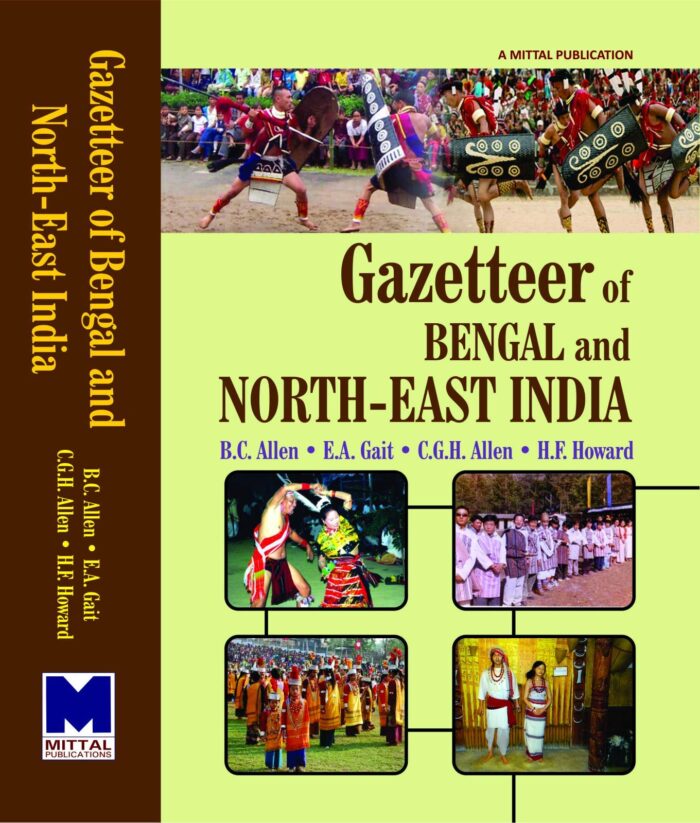
The post independence generation of Indian officials is aware of the District and State Gazetteers primarily as the legacy of the British rule- evidence of the deep interest of the British members of the ICS in all aspects of the provinces and the districts they administered for the Crown; and in the local history, cultures, languages, arts and crafts of the people , their agriculture and industrial activities as well as natural resource endowments especially forests and biodiversity. Endowed with remarkable spirit of enquiry, they examined from a scientific perspective the rivers, lakes, forests, hills, flora and fauna, wildlife as well as minerals and anything to which ” value addition” was possible with application of technology to make it a marketable product.
The old State and District Gazetteers were voluminous and at the most glanced through but not intensively read in the post independence period as the official priorities were different ; and hence no thought of reviving the practice of preparing the Gazetteers was seriously entertained. The reasons for this apathy are many: Aversion to a colonial practice deemed some what paternalistic , and more importantly now in this age of ” information revolution” when every bit of useful information about any important fact or development- past and present is available at the click of the mouse of a computer and often seen and analysed in the TV soon after the occurrence, Gazetteers it is argued have lost their relevance. And therefore Gazetteers are deemed backdated soon after publication and thus are of limited practical use. All these arguments would appear specious if one goes through some of the old Gazetteers which are still in the State Libraries across the country and especially in Assam and North East.
One such seminal treatise is the Gazetteer of Eastern Bengal and North East India prepared by four Scholar ICS officials- B.C. Allen. EA.Gait, C.G.H. Allen and HF Howard who had served in the province which emerged following Lord Curzon’s Partition of Bengal Presidency in 1906. It may be mentioned that the Gazetteers were then classified into 3 broad categories- the Central, earlier known as the Imperial Gazetteer, Provincial and District Gazetteers. The reprinting of the Gazetteer of the province covering also the” Native States of Hill Tippera ( Tripura state today ) and Manipur” by Mittal Publishers Delhi in 1993 is thus commendable as it helped towards building interest in the subject.
A broad understanding of the administrative object of painstakingly preparing a Gazetteer is possible by going through its Table of contents running into 40 pages ,and covering physical features, climate, flora and fauna and especially forests, population pattern and migration, agriculture, growth of tea plantations and jute, markets and towns, communications and administration- Revenue, Finance and the system of justice delivery, Education, Health and public works etc covering thus every aspect of life with remarkable details and insightful observations. As constraints of space won’t allow a very detailed account of the same, some of the facts mentioned in the economic, ecological, socio economic spheres which are very much relevant now to appreciate the geo strategic and economic situation of the north east are summarised below to underscore the relevance of such consolidated information which is not available today .
In the context of the global efforts to combat climate change and the strategic role of the eco system forests,, river systems and mountains of the north east it is time now to revive the practice of preparing the Gazetteers for a more effective policy making and implementation efforts of the Centre and the states in the North East in all spheres. However one must note that the practice of preparing the Gazetteers has not been altogether given up as it appears that a Gazetteer of Cachar district of Assam was prepared in 1991. There is thus hope for reviving the practice even when the efforts till now have been half hearted.
The most striking feature of the table of contents of this Gazetteer is its scientific assessment of the” physical features” of the north east covering natural divisions, rivers, lakes and Islands, geology and mining and especially mineral resources, soil characteristics, forests and biodiversity, system of management of forests and disposal of produce including Lac, Rubber and minor forest produce , hills and mountains, climate and temperature, rainfall, storms, floods and earthquakes etc with amazing details which apart from their enormous scientific value served as a guide to administer the areas. Evidently the underlying object of the exercise was resource extraction in tune with the colonial mode of production with civil administration providing effective support. This is clear in the sections dealing with agriculture, extension of tea plantations, jute and other commercial crops , introduction of new crop varieties, irrigation and flood control, livestock and professional grazing Reserves for introducing commercial dairy farming to meet the demand of the new urban centres. This brought Nepali graziers to Assam just as Tea brought Adivasi labour from uplands of East and Central India to Assam and jute farmers from east Bengal.
The sections dealing with District specific local history and archaeology prepared the ground for analysing not only ethnicity, language, agriculture and economy of the district but also inter provincial population movement in the NE region. In the same way the administrative system of every district was analysed meticulously pointing out the differences between the Hills and plains Districts in regard to application of civil and criminal laws and the powers exercisable by District officials as for instance in the hill districts, the Deputy Commissioner exercised the powers of the Sessions Judge. A very thorough assessment of the district and local economy, land laws, land relations and tenurial arrangements, land revenue, agriculture and allied activities, industries, natural resource use, extraction of minerals, trade, markets, manufacturing and investment was made as also the status of employment, education, public health facilities and surface and river communication systems. In particular, the observations made on “migration” might have even shaped the public perceptions on the subject; as for instance in the section which deals with population of Assam the word” foreign” was used liberally to define the immigrant labour community and even their ” castes “which was avoidable as they were seen elsewhere in British India as just outsiders or” upcountry men”- a term used by the British officials in Bengal to denote the people of the upper region of the river Ganga and not foreign nationals under the extant laws. The following sentences from page 44 merit attention:
“The preponderance of foreign born element in the population was most pronounced in Lakhimpur where they formed 41% of the whole and in Darrang and Sibsagar (25%).” It is also seen that at page 52 as many as 9 ” foreign castes” were noted including Santals, Mundas and Oraons though these were tribes in their provinces and not “castes” in the sense it was commonly understood. This kind of” racial profiling” might have contributed to the growth of a mindset in the North East from the very beginning of the British rule unwilling to accept the presence of the migrants or outsiders even when it was the inexorable outcome of the colonial economy.
It is clear that the underlying principle of preparation of the Gazetteer was integrated learning and approach to governance which is often missing now resulting in misperceptions; as for instance in the entire debate on “illegal migrants” in the North East the fact that the Partition of 1947 didn’t divide only the Bengali people but also divided Garos, Khasi-Jaintias, Mizos, Manipuris, Hajongs, and Chakmas as well is conveniently forgotten. In the same way separation of Burma in 1937 left large areas inhabited by the Mizos,Nagas, and Manipuris of Kubo valley on the other side dividing the people and creating in the process unending problems such as the present issue of the Chins, the ethnic Mizos of Chin Hills of Myanmar seeking shelter in Mizoram in the wake of military crackdown on the Chins by the Myanmar Junta and the government of Mizoram’s stand favouring their shelter in the state despite the central government’s contrary position in the matter. The Eastern Bengal Assam Gazetteer throws light on how districts were formed in Bengal- Assam- Burma Subregion which has much relevance even now for appreciation of the sub- regional geostrategic issues.
The most striking unstated message of the Gazetteer is that ecological security of the entire Subregion demands an integrated approach to conservation of forests, wildlife and biodiversity, rivers, wetlands which calls for an integrated conservation based policy of resource use and management for sub regional ecological security essential to combat the looming threats of climate change ; and therefore state policies of North East India, Myanmar and Bangladesh have to be fine tuned to meet the climate crisis as political boundaries- internal and international don’t divide geography and ecology. And this applies to economic development as well. The resumption of the practice of preparing the Gazetteers of the North East will be a firm step towards building a Subregional consensus towards attainment of goals such as no deforestation by 2030 adopted at the just concluded UN COP26 Glasgow Summit of Nations.
[the_ad id=”41103″]


















